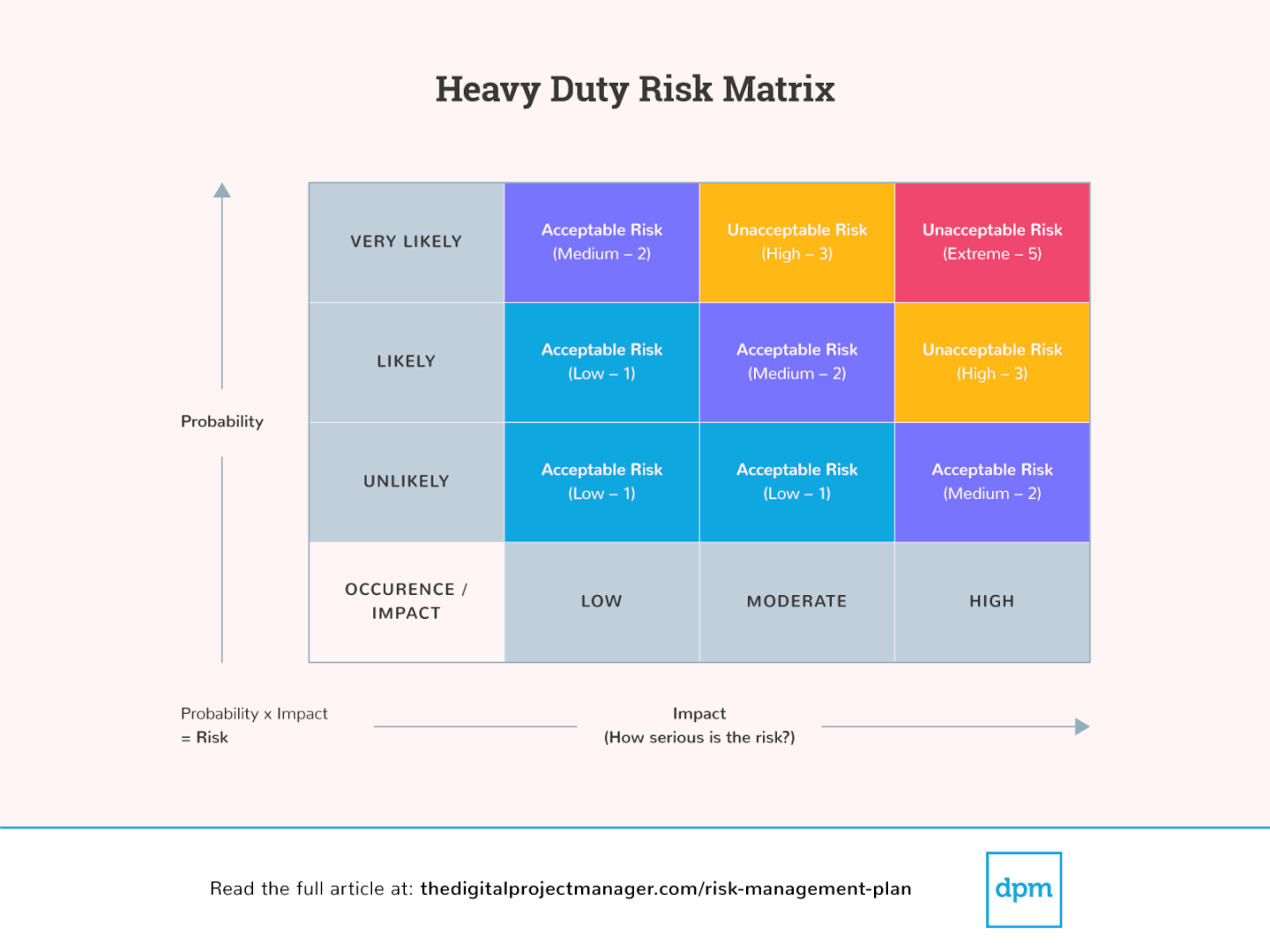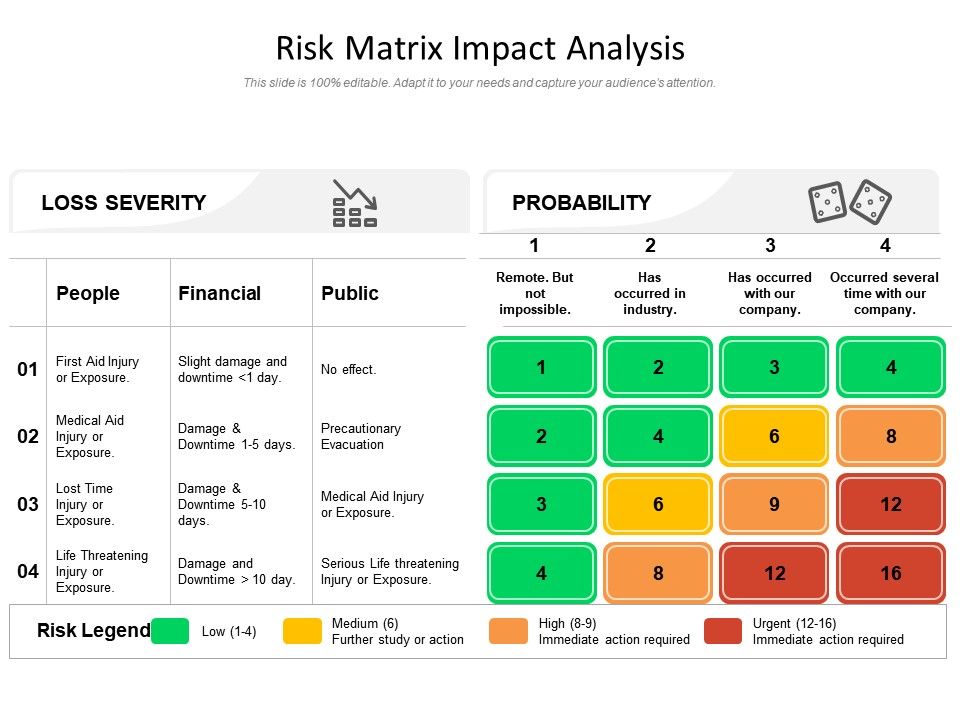

For example, the risk of employee injury, which has a low likelihood but high impact, would be considered a high-priority risk.

Red condition These high-risk scores are high in impact and probability.Īmber condition (aka yellow condition) These risks are somewhat high in impact and probability. There are three common categories based on risk score:


Based on the risk score, the performing organization can place the risk in differing categories to guide risk reaction. The scores within the probability-impact matrix can be referenced against the performing organization’s policies for risk reaction. Ordinal scales Identify and rank the risks with common terms, such as very high to very unlikely, or using a RAG (red, amber, green) rating to signify the risk score.Cardinal scales Identify the probability and impact on a numeric value from 0.01 (very low) to 1.00 (certain).The probability of occurrence for each individual project risk is assessed as well as its impact on one or more project objectives if it does occur, using definitions of probability and impact for the project as specified in the risk management plan. This matrix specifies combinations of probability and impact that allow individual project risks to be divided into priority groups. It uses a numerical scale to rate the likelihood and impact of each risk, which can then be used to prioritize risks and develop strategies to mitigate or manage them. This term is defined in the 3rd and the 4th edition of the PMBOK.A probability and impact matrix is a tool used in qualitative risk analysis to evaluate the likelihood and impact of identified risks. In using the probability and impact matrix, it is determined whether the risk would be classified as low, medium, or high, by considering two distinct factors: the overall probability of the occurrence, as well as the presumed impact if it did occur. The probability and impact matrix refers specifically to the means that the project management team and or the project management team leader determine exactly what those risks may be. Specifically, the concept of the probability and impact matrix refers to instances in which the project management team and or the project management team leader determines that there is a certain element of risk involved in one or more phases of a project or of an activity that is a part of the project as a whole. The four word term probability and impact matrix sounds like something terribly complex and difficult to understand but in reality is something that when understood is an extremely simple concept and something which is practiced not only in the arena of project management but also by most people in their everyday lives.


 0 kommentar(er)
0 kommentar(er)
